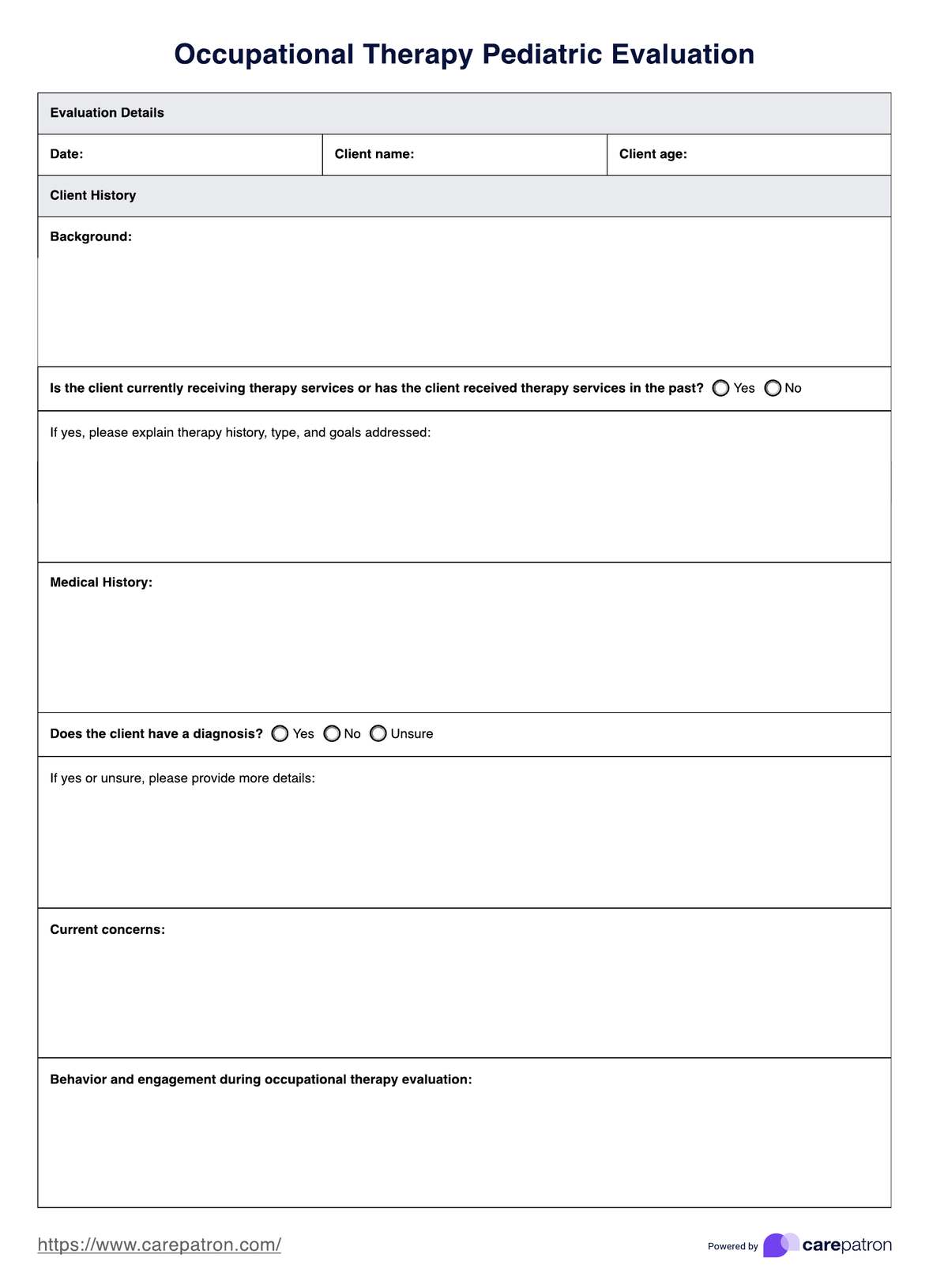A pediatric occupational therapy evaluation thoroughly assesses a child's fine and gross motor skills, sensory processing abilities, visual motor integration, and overall developmental milestones. The review may involve standardized evaluations, direct observations, and collaboration with parents and educators to understand the child's abilities comprehensively.

Occupational Therapy Pediatric Evaluation
Learn about the process of pediatric occupational therapy evaluation. Download Carepatron's free PDF example to assist in understanding and conducting assessments for children.
Occupational Therapy Pediatric Evaluation Template
Commonly asked questions
Pediatric occupational therapists utilize assessments tailored to the child's age and developmental stage. Common tools include the Peabody Developmental Motor Scales, Developmental Test of Visual Perception, and sensory processing checklists. These assessments provide valuable insights into specific areas of a child's functioning, guiding the formulation of targeted intervention plans.
A child may need an occupational therapy assessment if they exhibit challenges in fine and gross motor skills, sensory processing, self-care tasks, or school-related activities. The assessment helps identify specific areas of difficulty and informs the development of individualized interventions to support the child's overall development.
EHR and practice management software
Get started for free
*No credit card required
Free
$0/usd
Unlimited clients
Telehealth
1GB of storage
Client portal text
Automated billing and online payments











